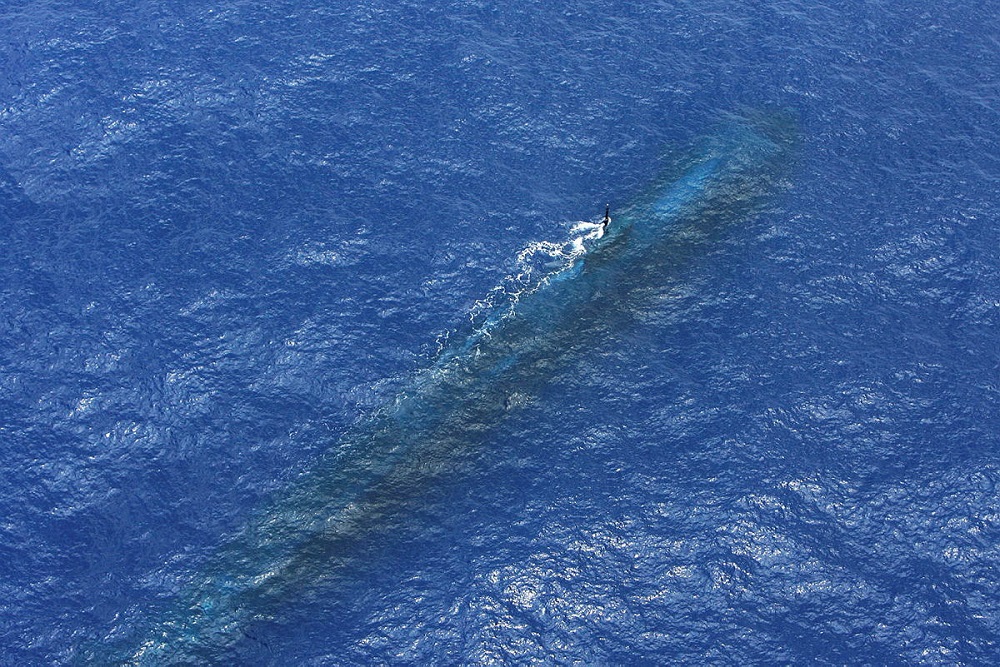
The AUKUS pact promises to provide Australia with the first of its nuclear-powered submarines (SSNs) in the 2030s. But how will those boats, and the AUKUS SSNs to be delivered in the 2040s, fare in oceans whose soundscapes have been altered by ocean acidification and climate change?
A new study suggests that over the coming decades, soundwaves will travel further through a warmer, chemically different, less dense ocean—and it will be noisier underwater than ever.
Australia learned long ago that acquiring submarines is complex and always takes longer than expected. This was certainly the case with the Oberon class that Australia purchased from Britain in the 1960s—eight were ordered but only six delivered. And it held true for the Collins class that followed, which had problems that took almost 20 years to remediate.
Lengthy submarine design and delivery schedules create opportunities for adversaries to capitalise on fast-moving disruptive technologies such as artificial intelligence, quantum computing and autonomous systems. These technologies will change how underwater operations are conducted in ways that are difficult to predict and account for.
However, it is possible to predict with some confidence the ways in which the acoustic environment will change over the coming decades—and my simulator does just that. My research suggests that as the oceans become warmer and their chemical make-up changes, sound will travel further due to reduced transmission loss.
By 2100, ultrasonic sonar transmissions in the 30 kilohertz range (a frequency that might be used for mine hunting) will travel between 40% and 87% further than they do today, and sonar transmissions in the 10 kilohertz range (a frequency appropriate for hydrographic mapping) will travel between 15% and 25% further.
The effect will vary depending on latitude: colder polar oceans will experience more extreme variations than warmer coastal waters.
With sound traveling further, undersea stealth platforms such as submarines will find it more difficult to hide in the open ocean. But they may also find it easier to hide in coastal waters, as the ocean becomes noisier.
I modelled the effects of our changing oceans over time by bringing together predictions from the UN Intergovernmental Panel on Climate Change’s representative concentration pathway 8.5 climate model with data from ocean-going Argo data-collection robots that agencies such as the CSIRO use to monitor ocean parameters. I fed this data into a custom-built simulator, which generates a digital twin of the ocean to explore what these changes might look like.
The impact of changing hydroacoustics is far-reaching, extending to military, commercial and scientific applications. It will have significant effects on underwater technologies that rely on sound, such as active and passive sonar, hydrophones, echo sounders, fish finders and sub-seafloor profiling devices.
My findings suggest that the changed environment will have positives and negatives for submarines. Thermal layers are likely to have a greater density differential with the cooler water below them compared to today. This means that submarines will be harder to detect when such a layer is present. However, because sound will travel further, when there’s no thermal layer they may be easier to detect.
Even as it potentially becomes much more difficult to hide in the open ocean, increased noise across the full acoustic spectrum, as well as increasing sound intensity overall, will likely make hiding in coastal shallows, littoral waters and archipelagos much easier.
The time involved in taking a submarine from concept to operations means that the Australian Defence Force needs to start planning for a changing environment now. Naval architects will need to consider material choices for both anechoic plating and hull construction, while marine engineers will need to consider improved dampening for the mechanical components that generate noise. Electrical engineers will need to begin designing next-generation sonars, sensors, processors and filtering techniques to improve their ability to detect hostiles amid very loud ambient noise.
Future submarines will almost certainly use embedded artificial intelligence and machine learning to process acoustic signal intelligence. The developers of these systems will need to take future acoustic conditions into account when assembling training datasets, or they may train an AI with a keen ear for today that won’t be suitable for tomorrow.
Picture this scenario. An Australian frigate is on patrol in the Coral Sea around 100 kilometres off the north Queensland coast when it receives intelligence that an enemy submarine is in the area. It pings the warm waters at 3,500 hertz with its sonar. Under conditions recorded in October 2023 by an Argo robot in the area, that sonar ping would be audible to a range of 28.5 kilometres. In 2100, the same sonar ping, in the same location, would be audible at 37.5 kilometres. When considering the circular area covered by the sonar in this scenario, that’s an increase of about 73%, from 637 square kilometres scanned in 2023 to 1,104 square kilometres in 2100.
More research is needed on this subject to understand the changing world that awaits us under the sea—especially considering the recent joint statement of AUKUS defence ministers about the important work to come in areas such as trilateral anti-submarine warfare and undersea vehicle launch and recovery.
My pilot study is a significant step towards understanding the effects of climate change on ocean hydroacoustics, but it has its limitations. We need more data, and future work should look to expand the dataset and modify the 2100 model to better align with today’s most advanced oceanographic models. Changes to the sea surface will also need to be factored in. The information we gain may make a significant difference to how we approach future warfare in the Indo-Pacific and will be an important part of maintaining a maritime capability edge. It may also provide insights that help Australia address two existential problems—climate change and our geostrategic circumstances.

